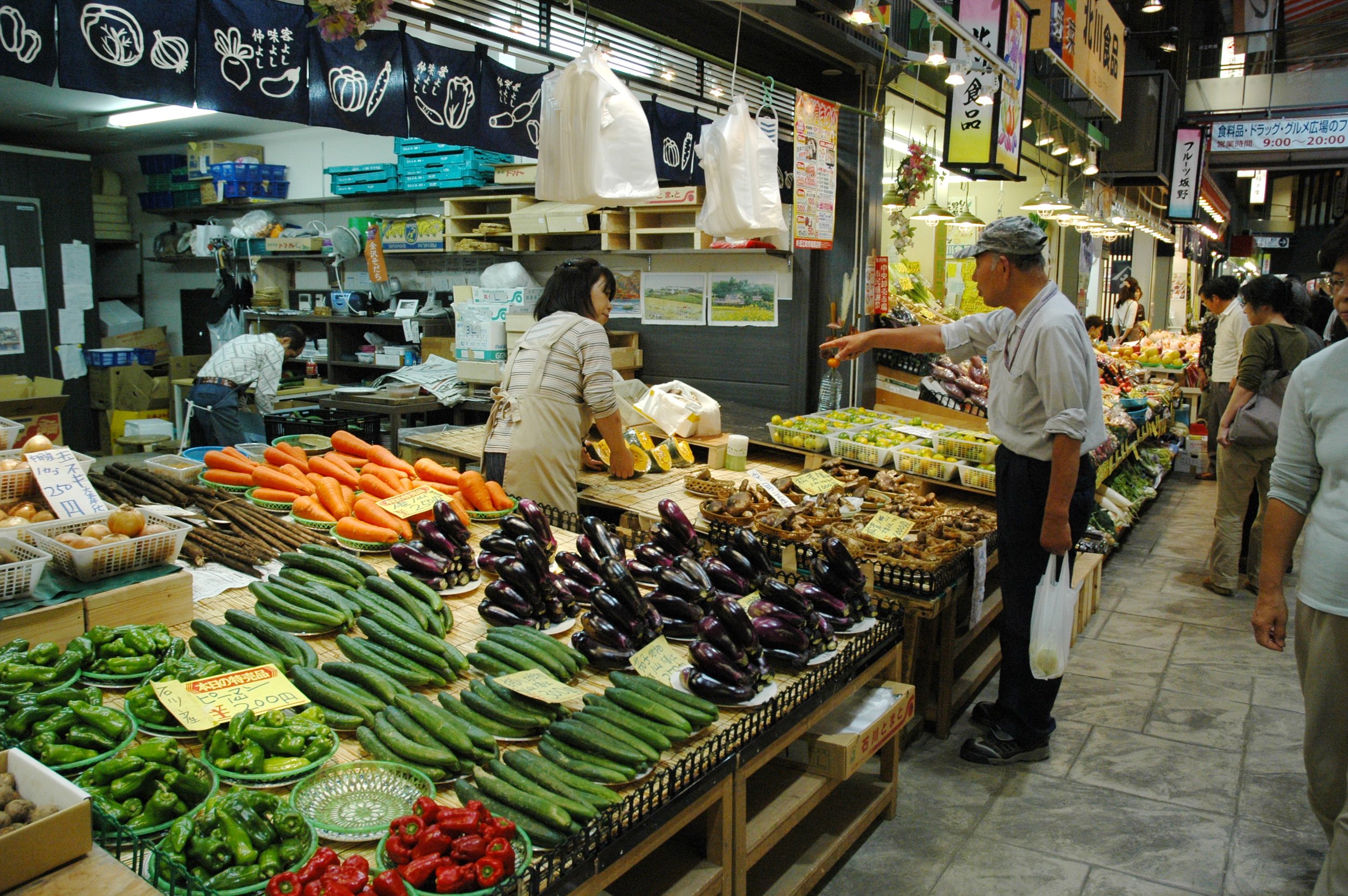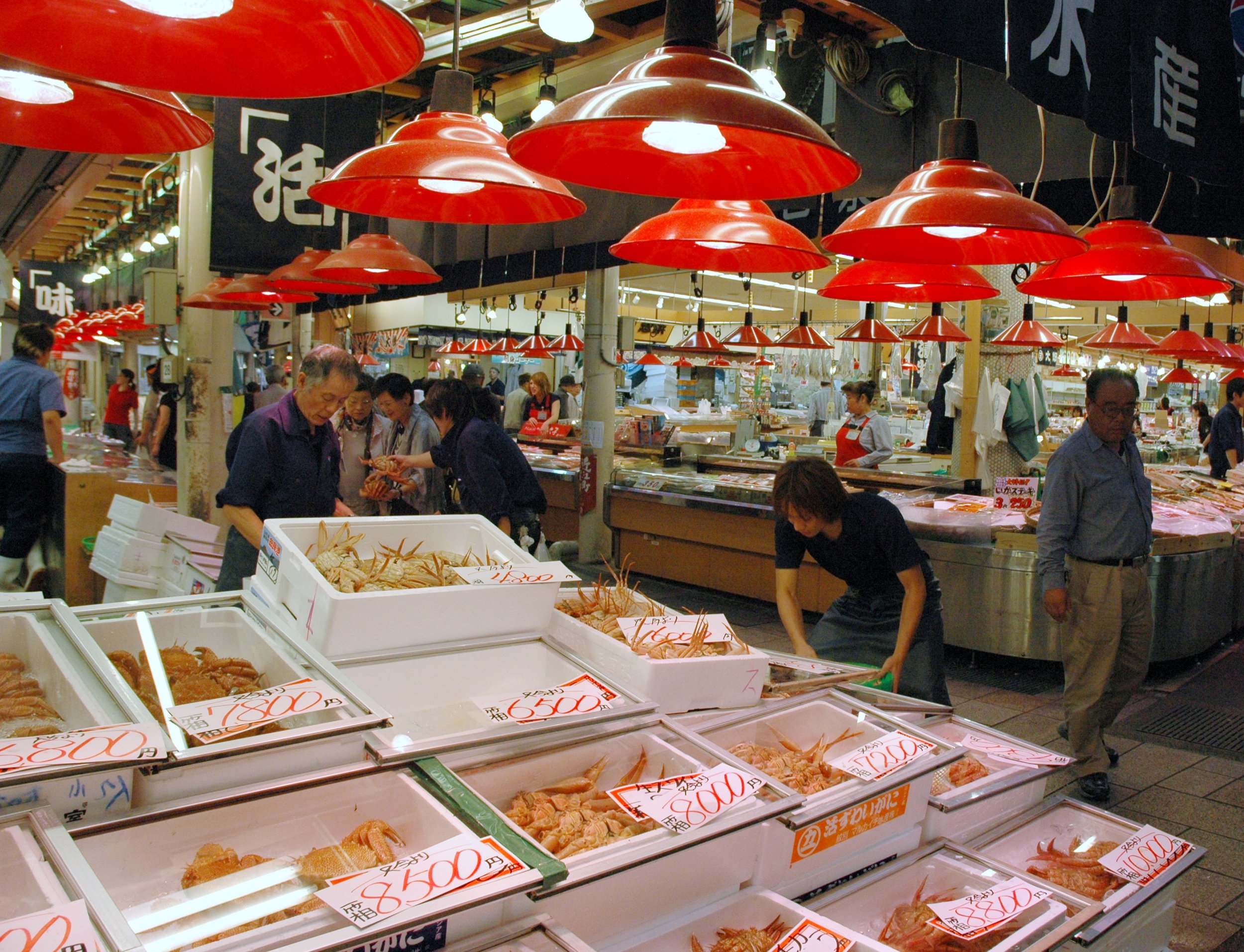A tour of Kanazawa
My plan for the day was really to hit the highlights of Kanazawa. After answering a barrage of emails regarding my recruitment for my thesis follow-up study I’m running when I get back to Vancouver, I headed out the door. I went back to the station to grab my bus pass for the day and hopped on the Loop bus bound for Kenrokuen. The town is fairly compact (it only takes about 40 minutes to do the entire loop), so I was soon off the bus and up the steps to the gardens. Kenrokuen garden has been classified as one of the the three best landscape gardens in Japan. I later discovered that the name literally translates to “Garden of the Six Sublimities”, which refer to Chinese landscape theory regarding the six essential attributes making up a perfect landscape garden: spaciousness, seclusion, artificiality, antiquity, abundant water and broad views. In the end, I think that sums up these gardens fairly well. The entrance I’d chosen immediately brought me to the most famous portion of the garden, Kotoji lantern, which is now the symbol of Kanazawa. Being so iconic, it was also the busiest spot. I think it was the day that all school groups were visiting because there were scores of uniformed kids roaming about. It was quite warm in the sun, so I spent much of my time in the shaded parts, of which there were many, as there are purported to be over 8000 trees. I couldn’t help but compare it to some of the European gardens we saw while in France, and there seemed to be an absence of colour (other than green). All shades of green were represented, in the leaves and the moss that seemed to blanket everything. The walk was pleasant around the gardens, as I managed to find a few less-trafficked area. I visited butterflies, carp and a disturbing number of truly gigantic spider webs. I came across mushrooms flourishing in a shaded area, which immediately made me think of Lord of the Rings and the hobbits clamoring for mushrooms in the first movie. Finally, I made my way out, stopping briefly for an ice cream cone reprieve.
Kanazawa castle park was only a short walk across the bridge from the Kenrokuen garden. Through a massive gate with some seriously substantial doors lay the castle itself. Parts of it are still under re-construction. The castle itself, though originally built in the 1500s, was destroyed by a multitude of fires over the years, so much of the description of the castle involved the nature of its rebuilding. It is an elegant structure, if not curiously unadorned. I suppose I’m used to the European chateaux and castles that were often extremely ornate. However, its lack of ornamentation may be in part due to its purpose as a military stronghold. I walked the grounds for a time, but didn’t really feel like spending the money to go up in the turret, so I headed back down to the bus stop. I wanted to take a bit of a rest and perhaps do a bit of writing, so I got off in essentially downtown Kanazawa in front of a large department store. Seven flights of stairs later, and I finally came across the stationery section, picking up a small $1 notebook. I found a “French” bakery and stopped in for lunch. After returning the coffee (apparently my “hot cocoa” sounds like “hot coffee”) in exchange for something more palatable, I settled in for a bit of writing. Revived by a second wind (or food, whichever), I discovered I was right next to the Nagamachi district. This area was the samurai district, situated at the foot of the castle, which has retained its traditional homes and earthen walls. I wandered through the quiet streets, popping into a few random shops and gardens that were open before finding my way back to the bus stop.
Next, I decided to check-out Omicho market. It reminded me a bit of Granville Island, though without the gorgeous waterfront views and not quite so polished. Lots of fruits and vegetables, fresh fish, oysters and crustaceans (apparently this city is known for great sushi perhaps owed in part to its abundance of fresh fish). With the sound of the ubiquitous and increasingly loud irasshaimase (“welcome”) ringing in my ears (I swear I think vendors compete with who can shout it the loudest), I headed out. I looped around on the bus back to the Higashi chaya district, as I wanted to stop in at the Hakuza shop to take a look at some of their wares again. After much deliberating, I picked up a few souvenirs and went on my merry way. I wandered the side streets for a time, as the air was cooling down and the streets were emptying. Soon enough, my mysterious blister on my toe that I discovered this morning was starting to ache, so I caught the bus back to the station. It would be a dinner of egg salad sandwiches (which I seem to be subsisting on during this trip), and a brief failed session of trying to fold an origami crane. Masaki, the guest house owner, will be heading to Hiroshima in November with his master to pray for peace, and asks all the guests to write a message and fold a crane so he can string them up when he goes. I believe the cranes are in reference to the story of Sadako Sasaki, who suffered from leukemia as a result of the bomb, and was inspired by the story that if you fold a 1000 paper cranes, you are granted a wish. As a result, paper cranes are now the symbol of world peace.


































